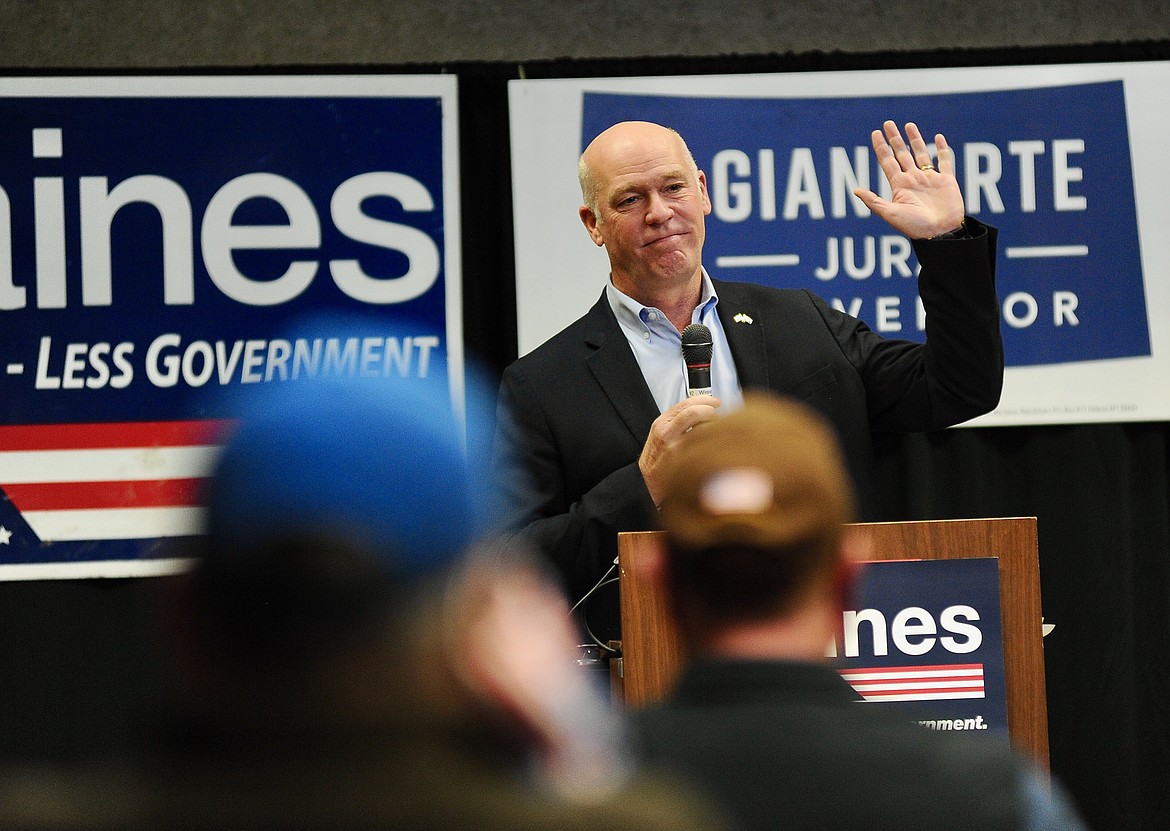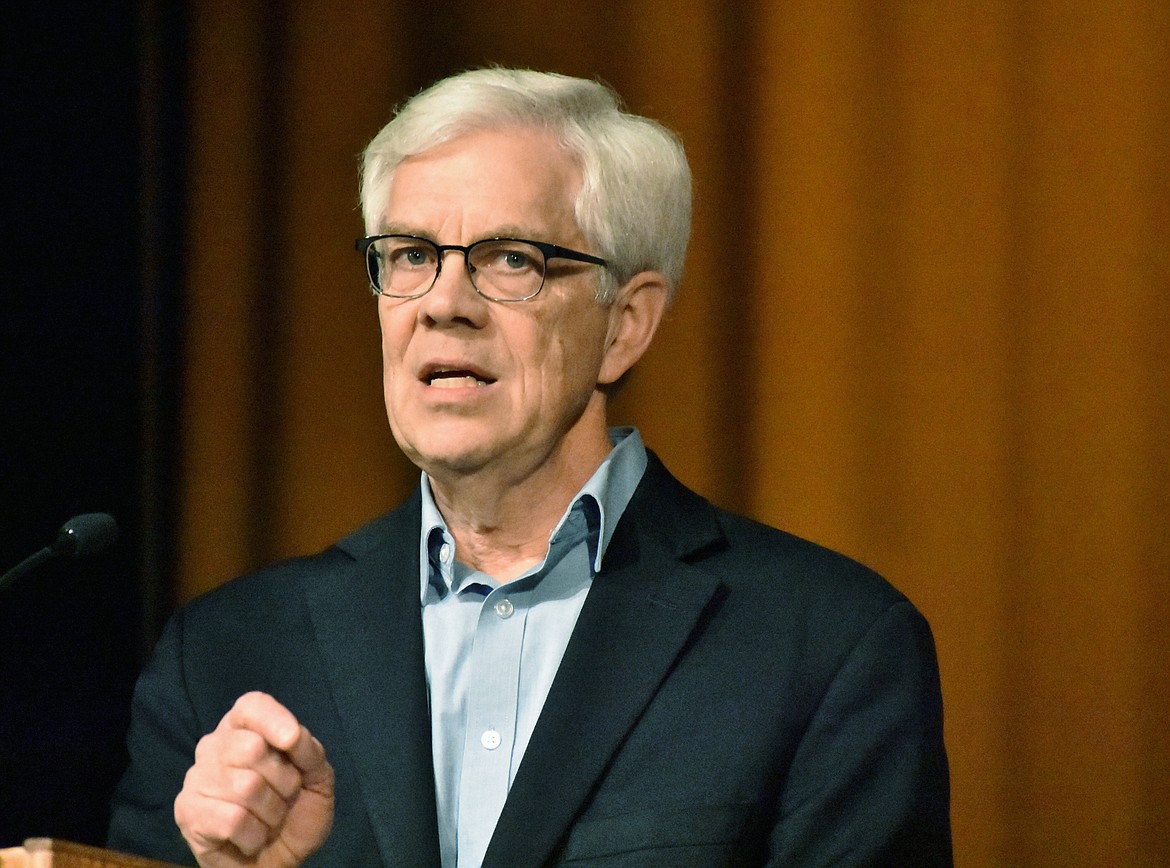Despite pandemic threat, gubernatorial hopefuls avoid COVID nitty-gritty
Just 15 days ahead of the election, Montana Lt. Gov. Mike Cooney laid out his ideas on how he’d handle the COVID-19 pandemic if elected governor. Details were few, but the Democrat’s plan became one of only a handful being offered by candidates in the 11 U.S. governor’s races about how they’ll approach what’s certain to be the dominant issue of their terms, should they win.
While much of the nation’s focus is on who will be president come January, voters who are deciding the next occupant of their governor’s mansion are also effectively choosing the next leader of their state’s COVID-19 response. The virus has made governors’ power highly visible to voters. As the states’ top executives, they decide whether to issue mask mandates, close businesses and order people to stay home.
All but two races for governor feature incumbents running for reelection: Montana’s Democratic Gov. Steve Bullock can’t run again because of term limits and Utah’s Republican Gov. Gary Herbert decided not to run for another term. In several other competitive races for governor this year, such as those in North Carolina and Missouri, opponents clash on the role of state mandates in slowing the virus. Still, COVID-19 often fades into the backdrop of many long-standing platforms or primarily comes up as candidates talk about the need to revive the economy.
Cooney’s proposal, released Monday, suggested using the National Guard to transport patients in extreme weather and subsidizing heating bills to help those quarantining at home. But other parts vaguely described how he would “develop a robust plan” to come.
His opponent, Republican U.S. Rep. Greg Gianforte, has acknowledged the health crisis but has focused primarily on the economy, saying the state has to “cure the economic pandemic” the virus caused.
Bryce Ward, a health economist with the University of Montana, said Cooney’s list was one of the first times he’s seen long-term planning for COVID-19 come up in what appears to be the nation’s tightest governor’s race. But, he added, neither Montana candidate has offered a concrete plan to deal with the dual crises that risk public health when people gather and businesses’ bottom lines when they don’t. Meanwhile, the state’s number of COVID-19 cases climbs and its economy suffers.
“Whoever wins, this is going to be the bulk of their term,” Ward said. “How are the candidates going to keep people afloat as long as they can? What are we doing in terms of planning for what we think our post-COVID world is going to look like?”
An October KFF poll found 29% of registered voters said the economy was the most important issue in choosing a president, while 18% said the coronavirus outbreak was their top issue. Republican voters were more likely to pick the economy, the survey found, and Democrats were more likely to pick the coronavirus. (KHN is an editorially independent program of KFF.)
“There are voters that feel that the government needs to lead, and there are voters that feel that the government is utilizing a pandemic to become too invasive,” said Capri Cafaro, a former Democratic Ohio state senator now teaching in American University’s public administration and policy department. “People are not necessarily making their decisions on ‘Did you do contact tracing? Are you going to slow the spread?’”
Among the incumbent governors seeking reelection this year, most of their campaigns’ focus on COVID-19 has been on how well they’ve responded to the crisis. Several pledge more of what they’ve been doing. “We’ll continue to follow the science and wear masks,” Delaware Democratic Gov. John Carney said in a recent debate.
Meanwhile, their challengers generally seek to cast the incumbents as mismanaging their states’ response and promising to undo what’s been done. Those who have put out actual plans to handle the pandemic are Democratic challengers to Republican governors, and their plans are similar to what Cooney released — some specific ideas and promises to fill in the gaps later.
In Missouri, Democratic challenger Nicole Galloway, who is the state auditor, made health care the center of her campaign and released a plan to respond to the virus with a statewide mask mandate and a limit on when public school classes can meet in person based on the community’s rate of infection.
Republican Gov. Mike Parson is the apparent front-runner in that state’s race. He has pledged to lead “the greatest economic comeback that we’ve ever seen in Missouri history.” The former Polk County sheriff also has focused on supporting law enforcement amid backlash against police brutality and racial injustice.
Curbing the coronavirus has taken a back seat to boosting the economy in Parson’s campaign. And, as governor, Parson has refused to issue a statewide mask mandate, despite a White House recommendation to do so. In late September, the governor and his wife tested positive for COVID-19. Parson has returned to work, which includes traveling across the state.
One of the more heated races is in North Carolina, where Democratic Gov. Roy Cooper is defending his seat against a challenge by his lieutenant governor, Republican Dan Forest. Forest sued Cooper this year to challenge the governor’s authority to impose COVID-related restrictions by executive order.
Forest dropped the lawsuit in August after a judge made a preliminary ruling against his case, then said on Twitter, “I did my part. If y’all want your freedoms back you’ll have to make your voices heard in November.”
Cooper’s campaign called the lawsuit “a desperate tactic to garner attention” for Forest’s political campaign. Since then, the governor has slowly eased COVID restrictions, updating an executive order to allow a limited number of people in bars, sporting events, movie theaters and amusement parks. Cooper is leading the race in recent polls.
Back in Montana, the pandemic surfaced in the gubernatorial campaign after health officials announced on Oct. 16 that a Helena concert, which Gianforte attended, was linked to several COVID-19 cases. More than 100 health professionals blasted him in an open letter for flouting local health restrictions, going maskless and making light of safety precautions at campaign events. Cooney called on him to suspend his campaign events until tested. Gianforte’s campaign has said he’s taking proper precautions and accused Cooney of politicizing a public health issue.
Cooney has said he’ll keep Montana’s COVID-19 response on the track he is helping set as lieutenant governor, with science guiding that work. Gianforte, who built a tech startup in Bozeman, has touted his business experience as proof he can lead Montana’s comeback. Both have said more needs to be learned about this virus and have pitched themselves as the one to steer the state’s economy through the crisis.
Ward, the University of Montana health economist, said the details are missing, such as how the winner will support businesses through the winter without federal aid. Or what the new governor would cut from the state budget if the economic crisis hits its coffers.
The state has a public mask mandate and a plan for reopening the economy with no apparent thresholds or timelines. The option for stricter rules has been left to county governments as the state sees its largest COVID surge yet.
Jeremy Johnson, a political scientist at Carroll College in Helena, said the initial lack of detailed pandemic policy in the state’s race could be attributed to both candidates trying to win over swing voters with safe themes. President Donald Trump won Montana in 2016 by 20 points, but the state has also had a Democratic governor for 16 years. While polls show Gianforte leading Cooney slightly, election handicappers Real Clear Politics and the Cook Political Report still consider the race a toss-up.
Yet as Election Day nears, the question of how to address the pandemic only looms larger. Montana’s case count is rising, adding to its total of more than 23,000 cases in the state of roughly 1 million.




